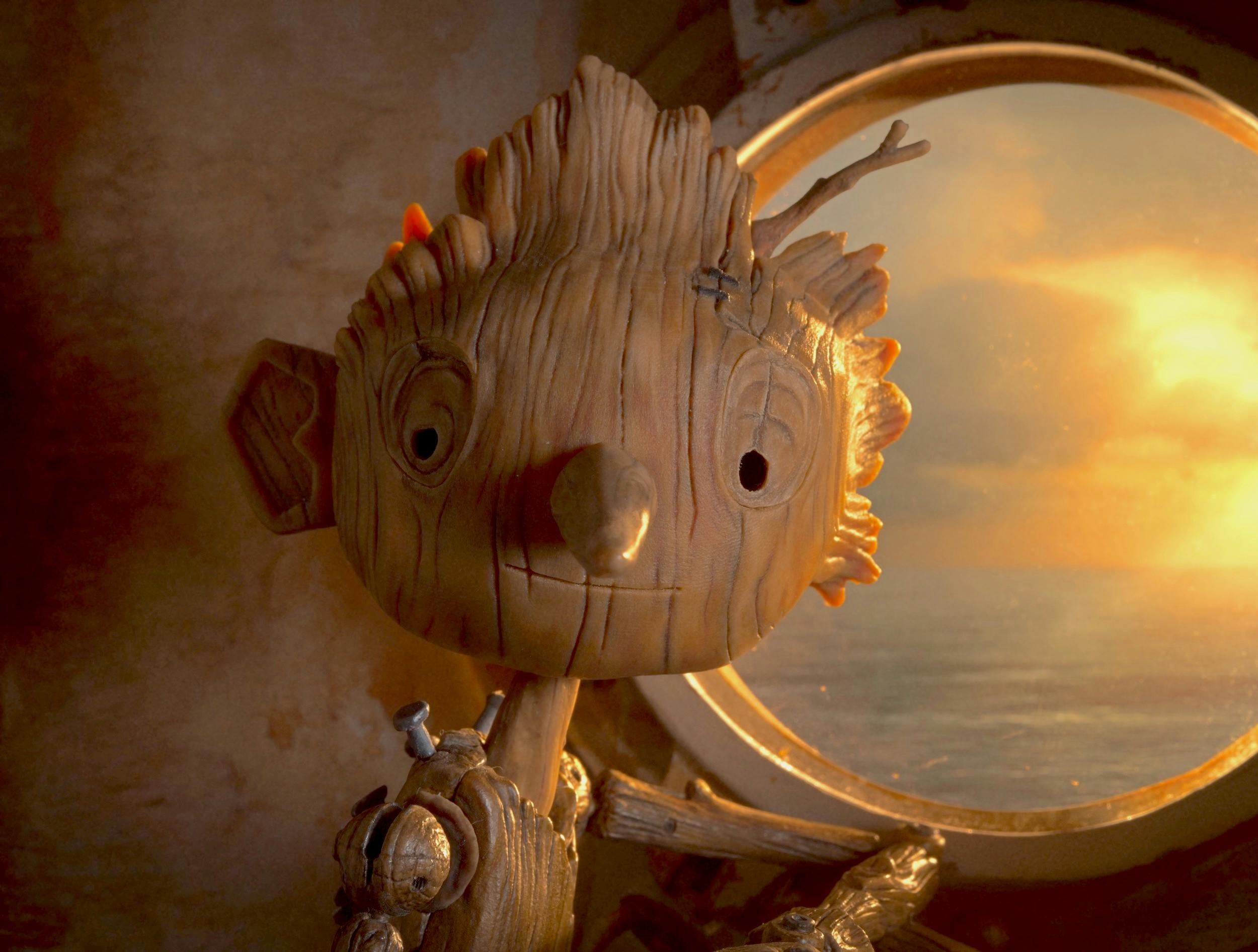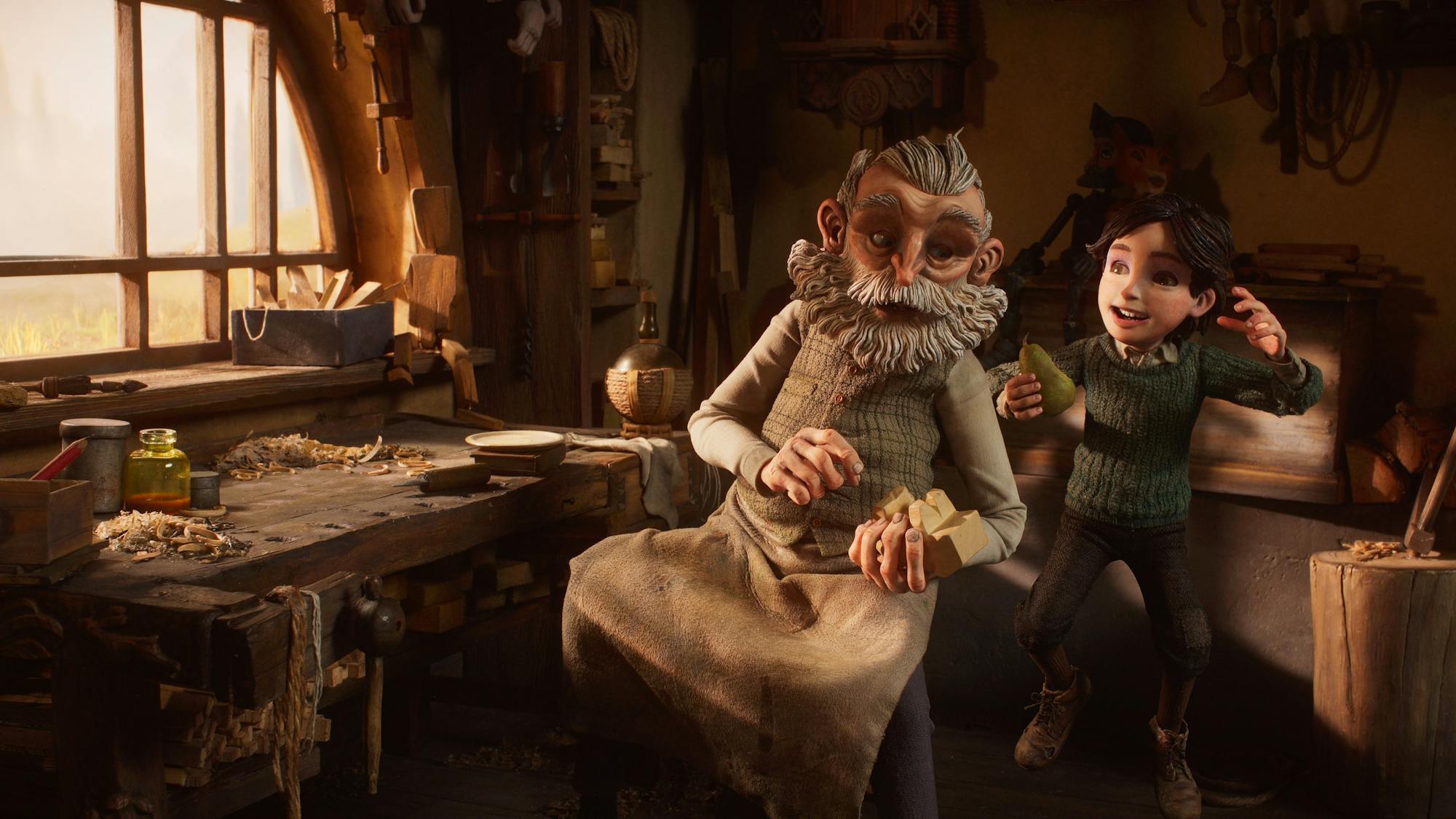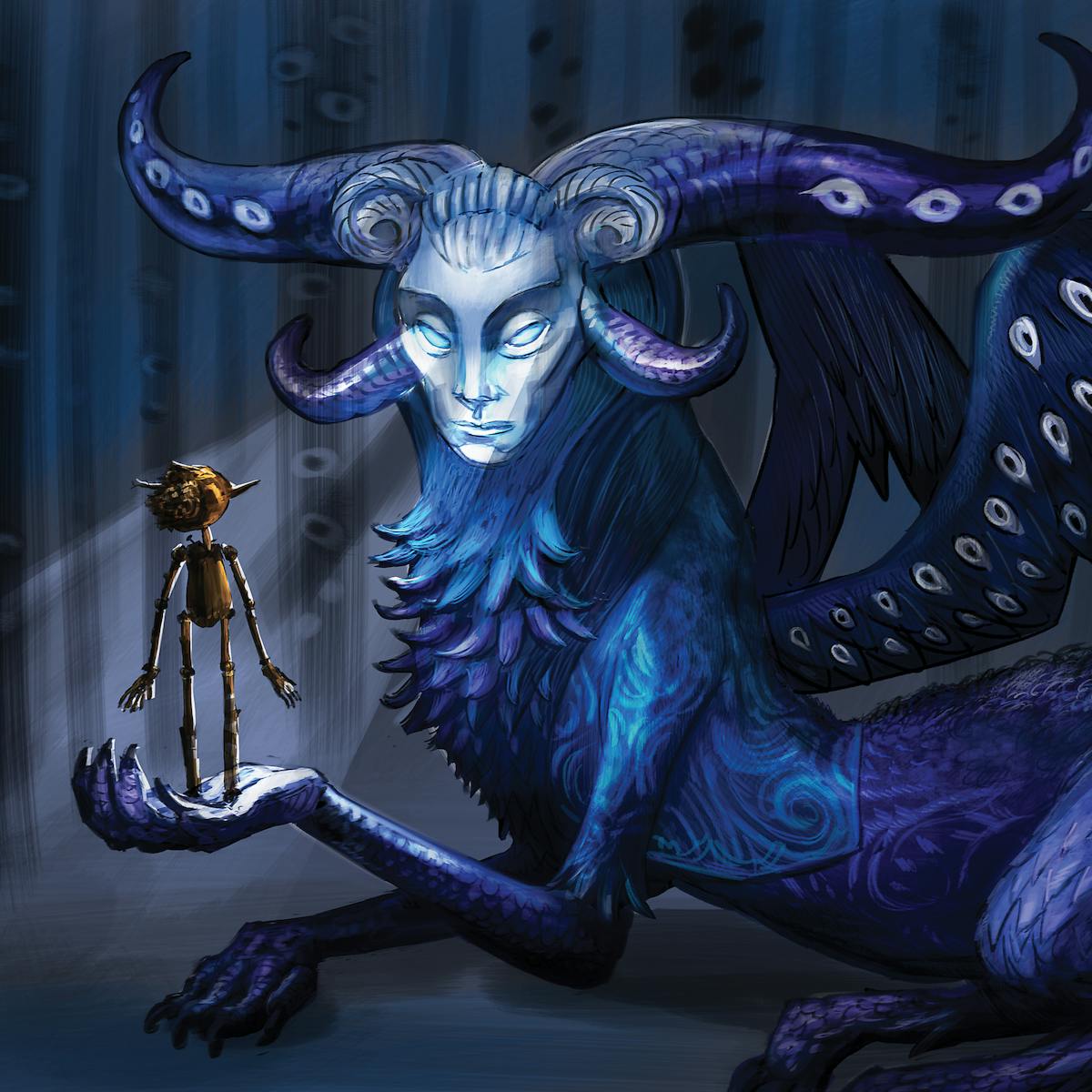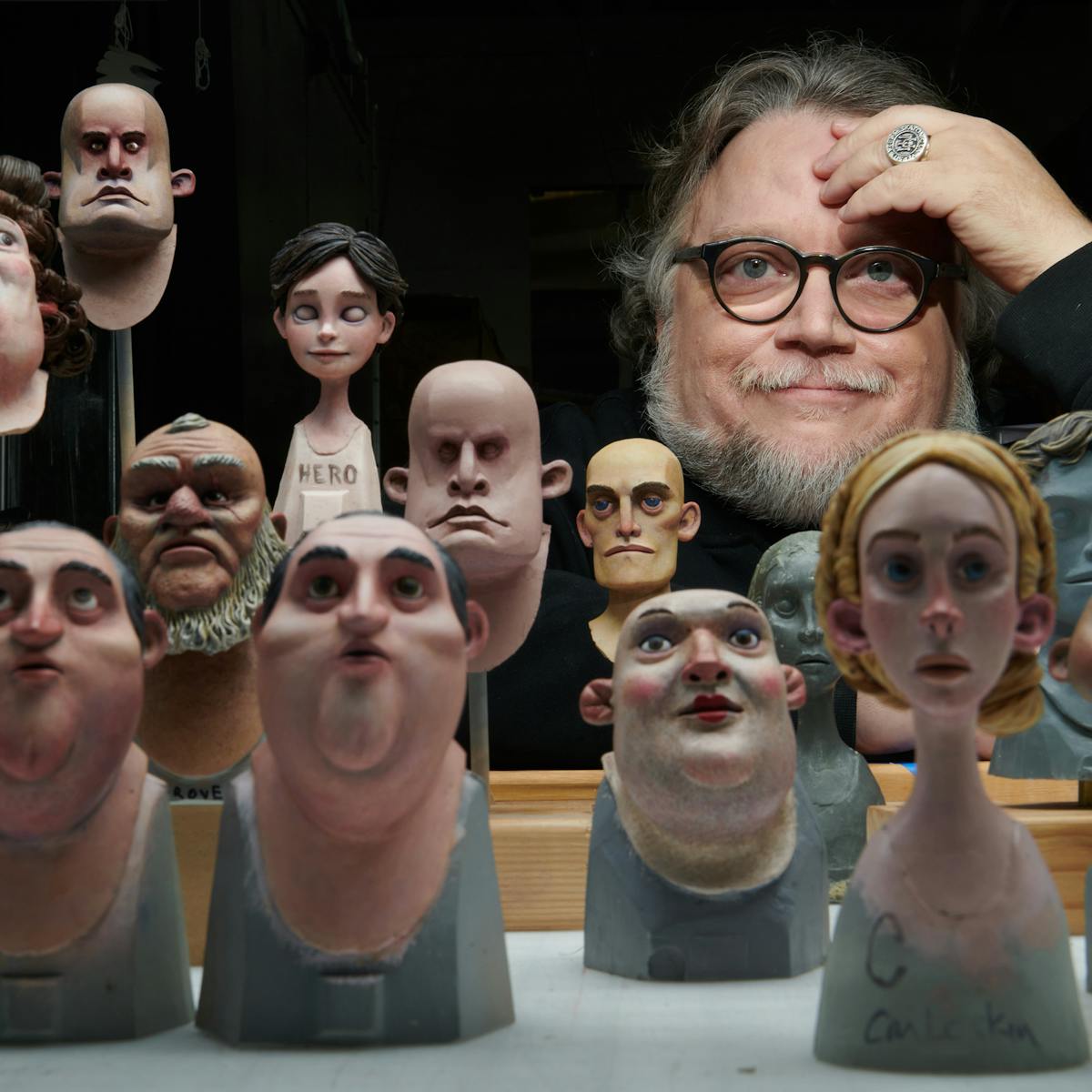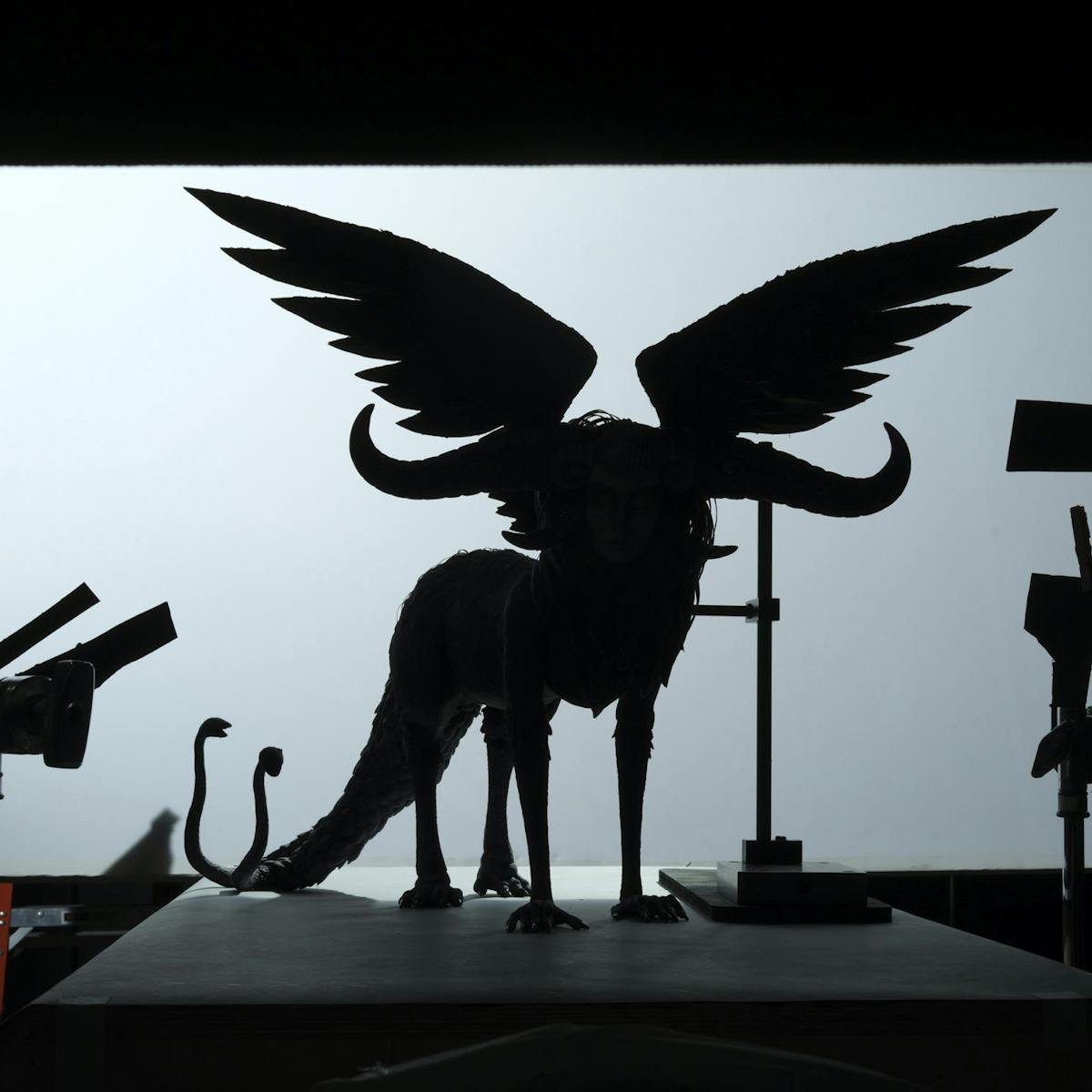What began as the nineteenth-century Italian tale of a lonely woodcarver named Gepetto and his mischievous puppet boy Pinocchio has grown into one of our culture’s most enduring stories, spawning at least 65 adaptations, most famously Disney’s 1940 animated feature. And while Disney spurned many of the darker aspects of Carlo Collodi’s fairy tale, the film still managed to terrify and delight generations of children with its monstrous sea creature and scenes of fun-loving, rebellious boys transformed into donkeys.
“I think the Disney film was burned with fire on my soul when I was a kid,” remembers Oscar-winning filmmaker Guillermo del Toro. “It was one of the earliest movies I shared with my mother, and it made clear that the world was as scary as it seemed to me as a kid. And I liked that. I resented [the message of] obedience but that took me a few years to understand. It felt like the imminent fall from grace, as a kid, was every day. Every day you would do something that would make you a disgrace, a burden.”
Del Toro’s epic stop-motion adaptation, 1,000 days in the filming, frees itself of the obedience narrative in favor of the possibility that the puppet might be loved as he is, real boy or not. The film, which features stunning, lifelike animation by Emmy-winning director Mark Gustafson and his best-in-class team of animators, embraces Pinocchio’s independent spirit, setting his free-wheeling innocence against a backdrop of dictator Benito Mussolini’s fascist Italy. The puppet is accompanied by a horde of macabre creatures pulled from Collodi’s original story and reimagined by del Toro, who guarantees “that this is of a piece with [The] Devil’s Backbone and Pan’s Labyrinth,” two of his earlier and best-loved films.
Academy Award-nominated director Joe Wright knows a thing or two about adaptations, having brought Cyrano, Atonement, Pride & Prejudice, and a Peter Pan origin story, Pan, to the screen. Following the London Film Festival debut of Guillermo del Toro’s Pinocchio, Wright sat down with the film’s creators — del Toro and Gustafson — and two cast members — young actor Gregory Mann, who voices both Pinocchio and Gepetto’s son Carlo, and frequent del Toro collaborator Burn Gorman who plays the village priest — for a lively discussion about the most emotionally charged and creative adaptation of Collodi’s work to date.
An edited version of the conversation follows.
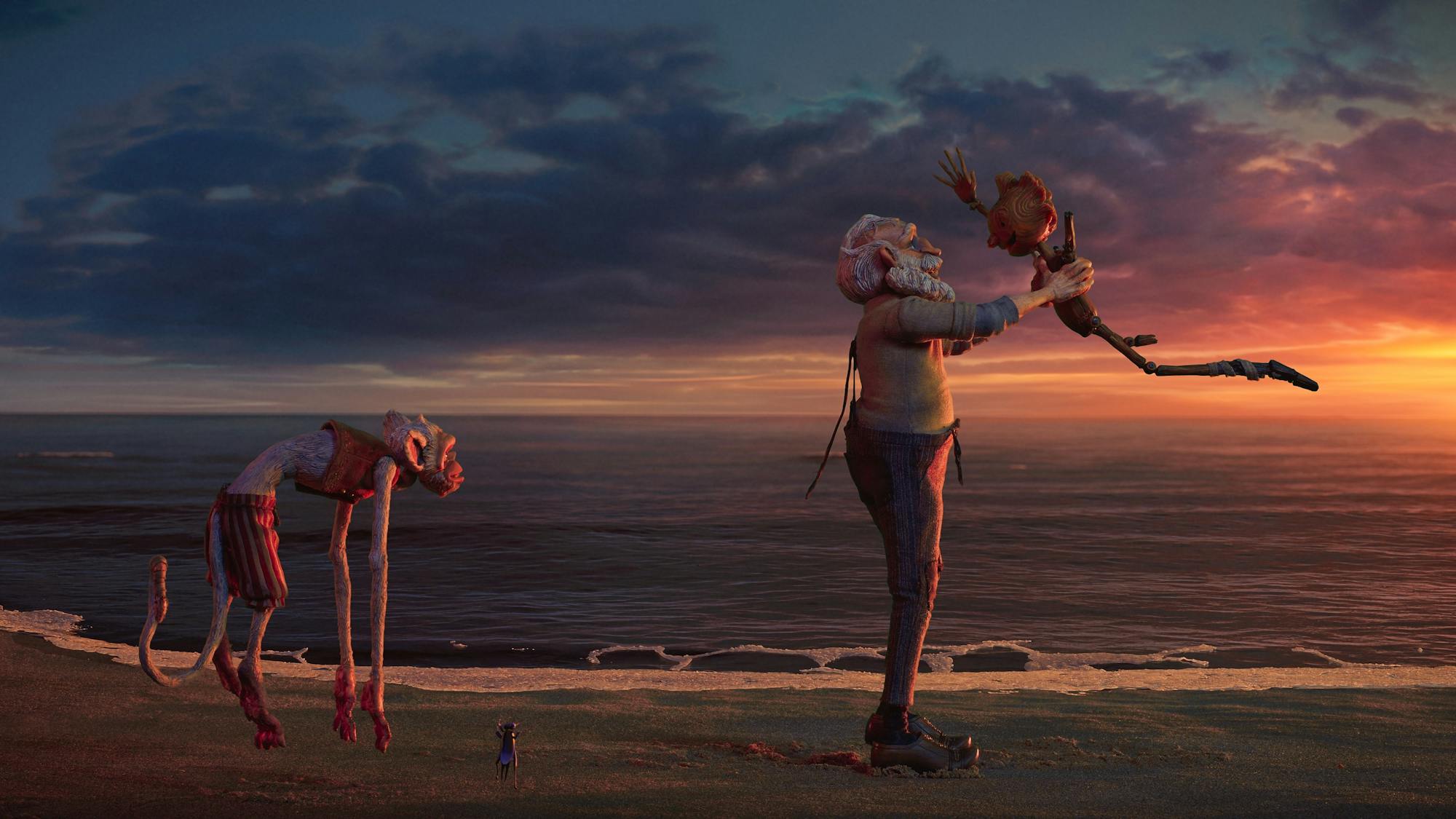
Spazzatura (Cate Blanchett), Geppetto (David Bradley), and Pinocchio (Gregory Mann)
Joe Wright: To me, the film speaks about fatherhood and war, fascism and love. I understand that this took a long time to bring to the screen. How did it start?
Guillermo del Toro: Half of my career has been trying to get the movie made. This version started 14 or 15 years ago because of the drawing of Pinocchio by [illustrator] Gris Grimly. The way it looks makes it instantly something that hasn’t been done. The point of inflection in our new Pinocchio is Pinocchio, and the stop-motion medium allows him to exist on the same level field as the rest of the characters; he’s not an anomaly. When we announced we were doing Pinocchio, every studio in town said, Greenlit, you don’t even have to take the meeting. Then we met and I said, It’s the rise of Mussolini. Pinocchio dies four times in the movie. And they would go, Ha ha, goodbye. In 30 years, I’ve learned that it takes only one yes to get it made. And it happened really, really late. What I wanted and what we guaranteed every artist involved was that no one will fuck with it.
Wright: I’m really interested in the tone of the movie because it seems to be as much for parents as it is for children.
Del Toro: Well, I always combine things that shouldn’t go together. I remember in The Shape of Water saying, “I want to do a Douglas Sirk movie version of Creature From the Black Lagoon but with musical numbers.” And it was not an easy pitch. Or [The] Devil’s Backbone, a gothic story during the Spanish Civil War. But I think the themes illuminate each other. The worst form of parenthood, of patriarchal structure, is fascism. We centered more on Geppetto than any other version, I believe — I haven’t seen all 65 that exist.
Wright: Mark, How did you get involved with this project?
Mark Gustafson: The phone rang, and it was Guillermo. When that happens, you know your life is going to take a turn. We actually shot for about 1,000 days, so it was a pretty vigorous experience getting this done. But I’ve been doing stop-motion for 35 years, and this was a chance to go out and collect the dream team of stop-motion. And we had the best team of artists that I’ve ever worked with. Period. And Guillermo.
Wright: Gregory, you voiced Carlo and Pinocchio beautifully. How did you approach each character?
Gregory Mann: Between Carlo and Pinocchio there was meant to be a resemblance; there are relations between what Carlo does and what Pinocchio does and says. So I thought that Pinocchio was kind of a reincarnation of Carlo, but obviously a lot more excited because everything’s new to him. I was extremely excited and I just tried to be the best version of Pinocchio that I could be.
Wright: Burn, you collaborated with Guillermo in Pacific Rim and Crimson Peak. What drew you to this priest character?
Burn Gorman: Well, it’s always fun working with Guillermo, but obviously it’s more than that. He’s one of the greatest living directors. I’ve been lucky enough to work with Guillermo on world-building. That’s what he does, dreamlike projects that feel a pleasure to be part of.
Del Toro: And we both came from priestly education, so we argued about Latin.
Gorman: Yeah, my grandma will be so proud that I’ve played a priest at last. There is so much imagery from our lapsed faith in the film, isn’t there? I really responded to that.
Wright: The voices were recorded before the animation, so how much freedom was there in the timing and rhythms, and did you have to think about the physical actions as you were performing the voices?
Gorman: It felt as collaborative as being on set. We were in a sort of Zoom situation most of the time, but Mark and Guillermo were there and it was a very organic process.
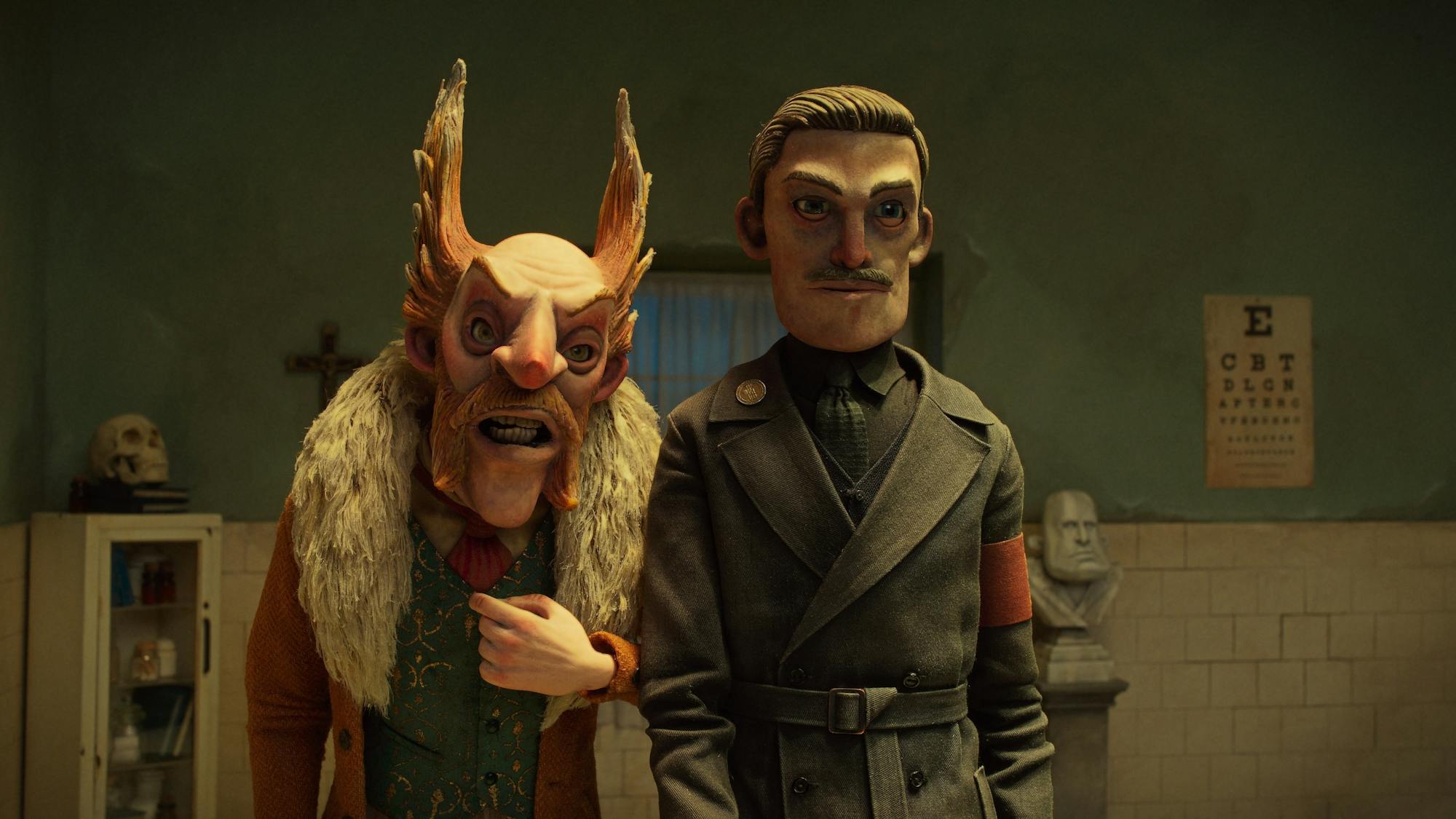
Count Volpe (Christoph Waltz) and Mussolini (Tom Kenny)
Del Toro: The voice [is recorded] first or parallel [to the animation]. Then you time the movie, and do turnovers of animation, directing the animators. It gives you precision and creation at the same time. The animators, we instructed them like actors.
Gustafson: They are our actors because, it’s a unique thing about stop-motion, it really comes down to an animator behind a curtain with a puppet. It’s a very intimate relationship and they really have to perform. One of our founding principles was that we were going to bring the animators back into the performances as much as we could because they have something to offer. When you go out and you get the best people, you really want to exploit them in the most positive way possible.
Del Toro: Stop-motion has moved incredibly fast in the last 20 years. One of the technologies that moves super fast is creating the faces that you can 3D print. But we went back to tiny robots that you control with a screwdriver. All the mechanics are in the head and the animator has complete control. Printing [the faces] gives the animator an incredible catalog, but it’s still a catalog. If you give them control over every facial feature, it adds 130 to 300 faces more, and they have that intimate link with the puppet.
Gustafson: I think you can see it in the performances because we can micromanage them into change as [we’re filming], which is a little bit harder when you just have a catalog in front of you. It really opens up your choices as an animator, and we can get at some pretty interesting things.
Del Toro: For example, one action that in animation will be super clean: I grab a glass and drink from it. In real life, we move it, then we take it again, we talk a little, and then we drink. That’s three actions more than you need if you want to be efficient. We did a lot of those unnecessary acts. These are things you realize in your stomach; you say, That’s a performance, not a puppet. [Japanese animation legend] Hayao Miyazaki says beautifully, When you animate the ordinary, it becomes extraordinary. And we did that and a lot of things normally not done.

Pinocchio (Gregory Mann) and the Black Rabbits (Tim Blake Nelson)
Gustafson: One of the other things we went after very specifically was having characters listen and take in information and processing it. Because when you see these puppets thinking, then they’re alive and you completely accept them. And that’s something that’s done on occasion in animation, but we really wanted to exploit that.
Del Toro: Two things were also very clear in my head from the beginning. I wanted to make a movie, not about obedience, but about disobedience. I wanted to make a movie in which Pinocchio transforms the people around him more than they transform him. If you notice, the cricket [who is the story’s narrator, played by Ewan McGregor] starts with a portrait of Schopenhauer on his wall and he says, “Life is a struggle, life is pain.” He thinks himself a philosopher. And at the end, the cricket is movingly alive and more simple and much more relatable. And Mussolini . . . The whole movie is a story of fathers and sons and Mussolini is there for that reason. He’s a horrible father, for me.
Wright: Do you ever suffer from self-doubt?
Del Toro: Self-doubt when you’re 20 is different than when you’re 50. When you are disappointed, you think, Did I do a hundred percent what I could? And [when you can say], “Yes.” Then you can relax. If I was a billionaire, I would very quickly become a millionaire. I would just do crazy, crazy stuff. And, I tell you, I think the form would move. Imagine that you’re on a ship called Film. Filmmakers are looking forward. And most studios are looking back saying, “We have a map.” You say, “No, no. Let’s go to the right because it looks really good.” You’re discovering new territory. But I think the relationship between frustration and desire creates art. If you have nothing constraining you, it’s impossible to create art. And when you’re free, you’re a prisoner of that.
